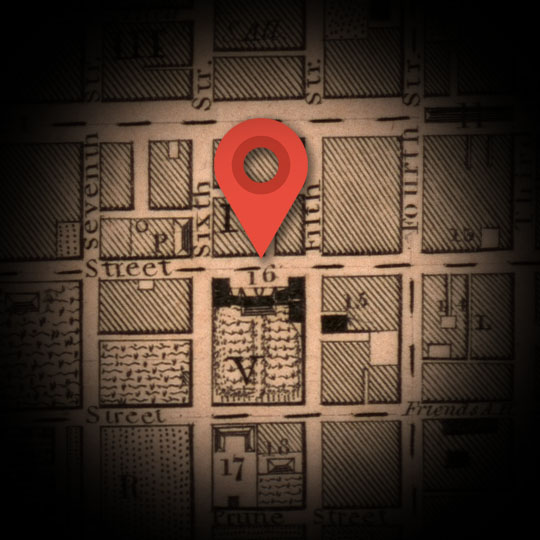INDEPENDENCE HALL
Explore
Known for centuries now as Independence Hall, this structure was initially intended to serve as the state capitol of the Commonwealth of Pennsylvania—and it was the original home of the storied Liberty Bell.
Probably no single other building is as significant to American History as Independence Hall. Both the Declaration of Independence and the U.S. Constitution were drafted here,eleven years apart.
A National Historical Park, Independence Hall has been remarkably well preserved, and it attracts tens of thousands of visitors every year.
Hamilton’s experience with Independence Hall likely began on his first visit to Philadelphia, during the early years of the Revolutionary War, and shortly after his elevation as aide-de-camp to George Washington.
On August 24, 1777, Washington decided to march his army right through the city—a procession that took five hours to complete. Washington was heading to the west to try to maneuver against the British, and while en route he thought it would be advantageous to parade his army through the city to give Philadelphia’s inhabitants the sense that a large and capable force of soldiers was there to protect them.
Hamilton, we know, also returned to the city in the early fall of 1777 on a mission to commandeer blankets and horses before the city fell to, and was occupied by, the British. They would remain in charge of the city for about two thirds of a year.
Formed during the Revolutionary War, the Confederation Congress was the progenitor of America’s current federal government. With no executive or judicial branch, the government consisted only of a legislative branch with all states—regardless of size— sharing power equally. The Confederation Congress had little to no enforcement mechanisms for the laws it adopted. Arguably, it was doomed from the start.
Nevertheless, Hamilton had been elected to the body as a delegate from the State of New York. He arrived in Philadelphia on November 26, 1782. And it was here, in July, 1783, that a disgruntled and menacing mob of Revolutionary War veterans descended to demand their unfulfilled pay for service.
Hamilton was scandalized by the mutiny, and doubly humiliated when Congress—and Hamilton with the rest of them—fled Philadelphia in response.
Four years later, Hamilton returned to Philadelphia as a delegate to the drafting convention for the United States Constitution. Both his war experience and the many frustrations of his time serving in a Continental Army uniform had hardened Hamilton’s ambition to forge a more robust and competent government.
His attendance at the Philadelphia “federal convention” was spotty. He participated in a rather limited fashion, taking the spotlight mainly in one long session of oratory on June 18, 1787.
Hamilton would surely have been in and around Independence Hall throughout his time as a citizen of Philadelphia—which stretched from August 1790 to February 1795.
Since Philadelphia remained the principal city of the young country, Hamilton made sporadic returns between then and the year 1799, when he traveled here to organize and participate in George Washington’s public funeral ceremonies.

TIME FRAME:
1777-1799